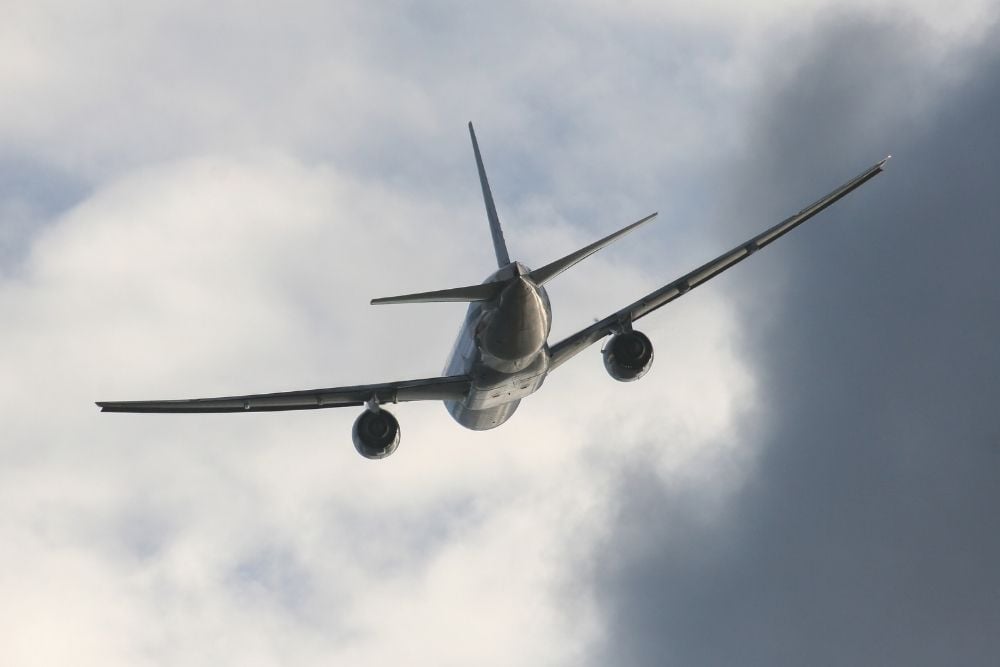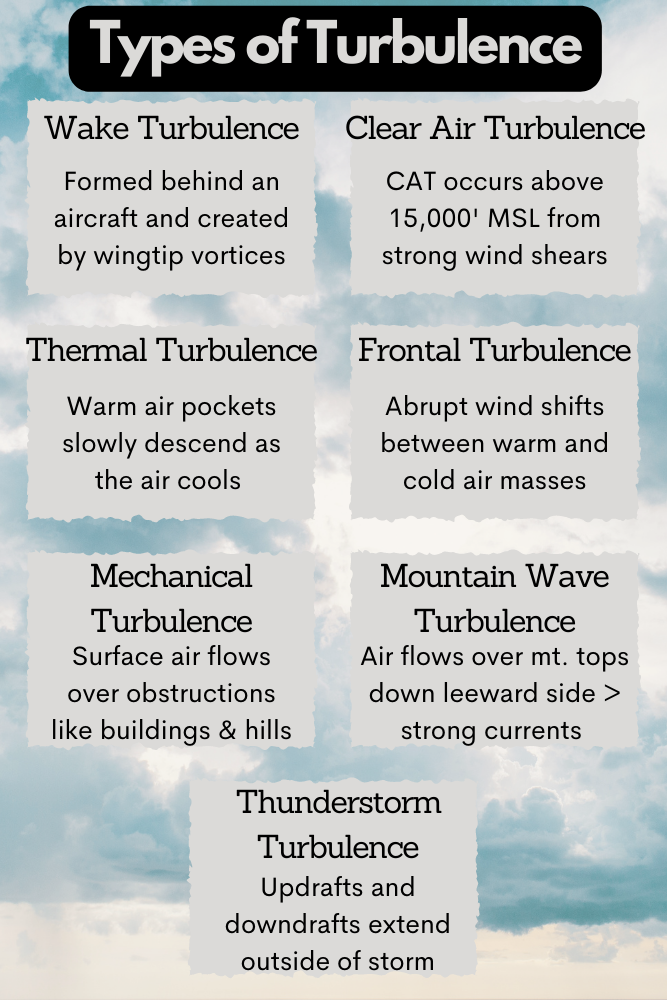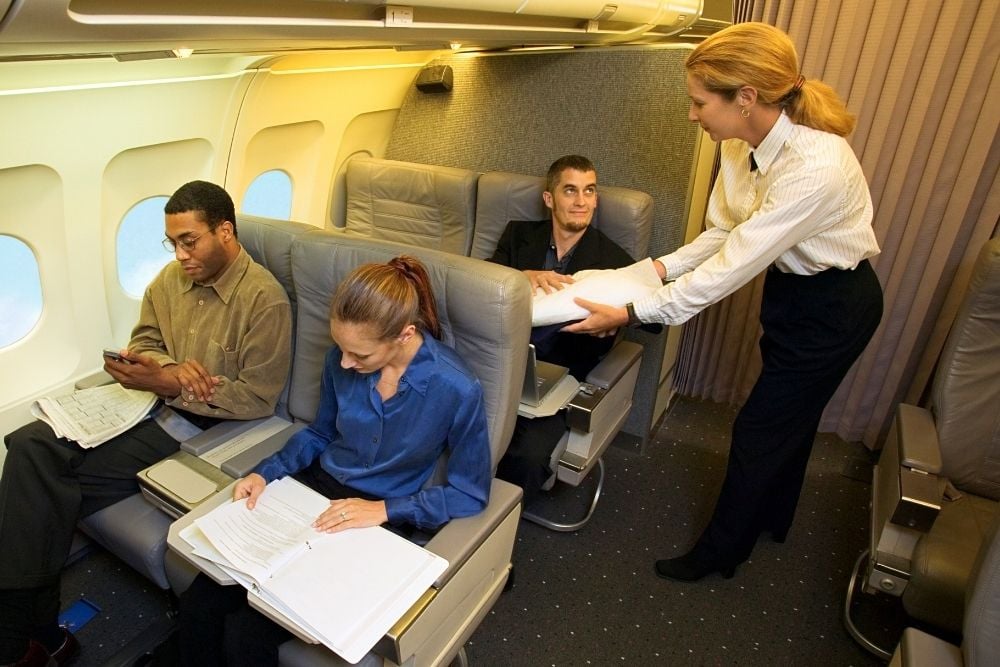Does turbulence shake you up? It shouldn’t! Pilots experience different types of turbulence during flight. Understanding turbulence can help you better respond when you face this situation.
What is the definition of turbulence?
Flight turbulence is something most passengers hate. What is turbulence? The meaning of turbulence is a sudden, violent shift in airflow. It creates up and down currents caused by irregular atmospheric motion. You can also define turbulence as that sudden jerking you sometimes feel in an airplane!
So, what does understanding turbulent flow have to do with safe flying? We were in the clouds, Instrument Meteorological Conditions (IMC), and flying in an area without radar coverage. My first officer (FO) was busy programming the Citation jet’s system with the latitude and longitude coordinates instructed by Bangladesh controllers. I focused on leveling the Citation at FL390 (39,000’). Suddenly the FO pointed upward exclaiming, “Oh my!”

How does a pilot respond?
I looked up in the direction he had been pointing right into the belly of an Airbus. The mammoth jet was so close that we could see the rivets on the underside of the plane. Immediately, our Crew Resource Management (CRM) training went into action, anticipating what was likely next: wake turbulence. Knowing turbulence could cause structural damage, I slowed the jet below maneuvering speed. The FO monitored gauges with verbal callouts, “Airspeed 116, crosschecked.”
The relief pilot had been napping in the cabin when it hit. Within moments, he was in the cockpit. While trying to keep his footing he shouted, “What the heck?!” He understood the situation quickly enough. The next few minutes seemed like hours while the forces sent our small jet into anything but upright. Once our Citation passed through the Airbus’s vortices, the remainder of our flight to Hanoi was uneventful.
What causes it?
Turbulence can be caused by many different conditions – wind, storms, jet stream and objects near the plane, such as mountain ranges. These conditions can range from the surface up to all flight levels, and there is no real way to forecast this phenomenon or see it on a map. During my world flight in the Citation, I experienced wake turbulence at altitude. Years prior, I experienced it during take-off in my small, 2-seat Grumman.
On that particular day, I had been holding short while a large cargo jet was cleared for departure. The jet was departing with a light quarterly tailwind on the cross runway. The air traffic controller cleared me for departure as the large jet cleared the runway. The controller followed with, “Caution: wake turbulence.” I knew about wake turbulence avoidance and knew the hazards. I recalled the least favorable conditions are a heavy, clean aircraft with a light quarterly tailwind.
The opportunity to climb did not present itself. Less than 500’ above the runway, the vortices pushed my Grumman down. Already at full power, the best I could do was keep the wings level and fly the airplane. I learned a critical lesson from this experience regarding the least favorable wind conditions and to factor in cross runways. Turbulence has the potential to be dangerous. Then and now, I keep this in mind when flying.
Want to watch our 4-minute video on turbulence?
What happens during turbulence?

Student pilots learn that air is a fluid. Air can be measured and has weight. Turbulence is caused when an airplane flies through waves of air that are irregular or violent, which cause the aircraft to bounce around yawing, pitching, or rolling. You can compare turbulence to two oceans meeting. Both oceans have large waves and currents that, as they collide, create even larger waves and currents. Some pilots use a turbulence tracker or forecasting tool. These do not tell where there will be turbulence. Instead, they suggest where conditions exist for turbulence to occur. It is nearly impossible to plan for it, so pilots train to be ready.
What are the different types?

- Wake turbulence forms behind an aircraft as it passes through the air creating wingtip vortices. These vortices can remain in the air or over the ground for up to three minutes after the passage of an aircraft. The greatest vortex strength occurs when the generating aircraft is HEAVY, CLEAN, and SLOW.
- Clear air turbulence (CAT) occurs at altitudes above 15,000 feet MSL and is caused by strong wind shears in the jet stream.
- Thermal turbulence develops when warm air rises in ‘pockets’ then slowly descends as the air cools. Under normal atmospheric conditions, air temperature usually decreases with altitude. When these conditions are reversed, cool air under a narrow, warm layer forms temperature inversion turbulence. Turbulence occurs in the surrounding boundaries of the warm layer.
- Mechanical turbulence is created when the air near the surface of the Earth flows over obstructions, such as hills, mountains, or buildings. The normal horizontal wind flow is disrupted causing swirls and irregular air movements.
- Frontal turbulence is caused by the abrupt wind shift between warm and cold air masses. Fast-moving cold fronts are the most severe in this type of turbulence.
- Air flowing over the tops of mountains can travel down the leeward side causing a flow to form with strong air current waves changing at all altitudes. Mountain wave turbulence can extend for hundreds of miles downwind of a mountain range.
- A storm cloud is the visible portion of a turbulent system in a thunderstorm. Updrafts and downdrafts often extend outside the storm with severe turbulence extending as much as 15 to 30 miles.
What are the effects?
When an aircraft experiences turbulence, the plane can drop or change altitude suddenly. This is why pilots always caution passengers to buckle up and stay seated when they are experiencing flight turbulence. The sudden movements put passengers at risk.
How do the airlines handle it?

Are you like this? Passengers taking commercial airlines flights worry when they experience turbulence. Strong intensity levels create fears about a crash. When it’s bad, the captain typically makes an announcement to reassure passengers. Passengers can relax once the flight crew explains the situation. Pilots learn how to deal with it during flight training. They can use a simulator to create extreme conditions. This type of work prepares them for the real thing. Pilots typically file a report (PIREP) to alert other pilots when they experience chaotic changes in flow velocity.
How can pilots avoid turbulence?
Understanding the causes of turbulence is one of the best methods for avoiding it. Because there are different types of turbulence, knowledge is critical. You can avoid inadvertently entering turbulence through training and practice as you become a knowledgeable pilot. Learn to anticipate turbulence. Understand how and where turbulence forms and the procedures for your aircraft. Like all seasoned pilots, I can testify to the power of turbulence!

Read more articles by Captain Judy Rice!


Turbulence is a sudden, violent shift in airflow. Turbulence is caused when an airplane flies through waves of air that are irregular or violent, which cause the aircraft to bounce around yawing, pitching, or rolling.Turbulence can be caused by many different conditions – wind, storms, jet stream and objects near the plane, such as mountain ranges.
thank you for the information
You’re welcome.
A few tiny bumps to one person can feel like the worst flight ever to someone else. Our brains and bodies have a hard time making sense of the sensations of turbulence, and that can make it seem worse or scarier than it really is. When flying through turbulence, the real danger to passengers is injuries from falling. Turbulence is caused when an airplane flies through waves of air that are irregular or violent, which cause the aircraft to bounce around yawing, pitching, or rolling. can compare turbulence to two oceans meeting. Both oceans have large waves and currents that, as they collide, create even larger waves and currents. Some pilots use a turbulence tracker or forecasting tool. These do not tell where there will be turbulence.
interesting